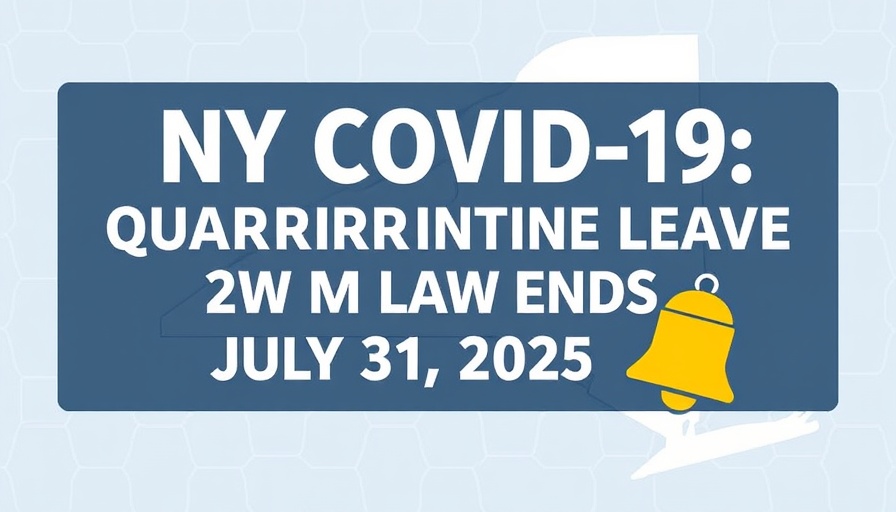
Understanding the End of New York's COVID-19 Quarantine Leave Law
As of July 31, 2025, the New York COVID-19 Quarantine Leave Law will officially end, signaling a shift in how companies manage employee leave amid evolving labor regulations. This law, enacted on March 18, 2020, was introduced to provide necessary paid sick leave for workers who were quarantined due to COVID-19. With it marking the final sunset of pandemic-specific laws, employers must now recalibrate their paid leave strategies to continue compliance with other existing regulations.
The Complexity of Ongoing Paid Leave Requirements
While the COVID-19 Quarantine Leave Law may be concluding, businesses are still faced with a complex matrix of state and local leave laws. According to recent analysis, many organizations risk non-compliance due to the myriad of regulations that vary by locale and industry. This creates significant challenges as manual tracking can be inefficient and error-prone. It’s vital for HR compliance officers and payroll managers to stay informed on these evolving labor laws to avoid potential penalties.
Why Compliance Solutions Are More Crucial Than Ever
With the end of this specific leave law, there is a continued need for comprehensive compliance solutions. Platforms like GovDocs help organizations navigate the complexities of labor law compliance, integrating technology with expert support. By utilizing these resources, businesses can streamline their processes, ensuring they understand both federal and state labor laws, which helps mitigate risks related to workplace investigations and employee grievances.
Future Implications for Employers and Employees
The ending of the COVID-19 Quarantine Leave Law may also indicate a broader trend in employment regulations. As we adapt to post-pandemic realities, it’s crucial for employers to develop remote work policies and remain alert to updates on labor laws, including pay transparency and anti-bias hiring practices. Staying ahead of compliance not only protects organizations from financial risks but also fosters a supportive workplace culture that values employees’ well-being.
Conclusion: Staying Ahead in Employment Regulations
As New York moves forward from specific pandemic-related laws, the obligation to adapt to an ever-changing regulatory landscape does not cease. HR compliance officers, legal counsel, and benefits managers should invest in systems that enhance their understanding of labor regulations and policies. By staying proactive in managing compliance, organizations can navigate the complexities of workplace laws effectively, ensuring they support their employees while safeguarding their interests. Explore ways GovDocs can assist with your compliance needs.
 Add Row
Add Row  Add
Add 




Write A Comment